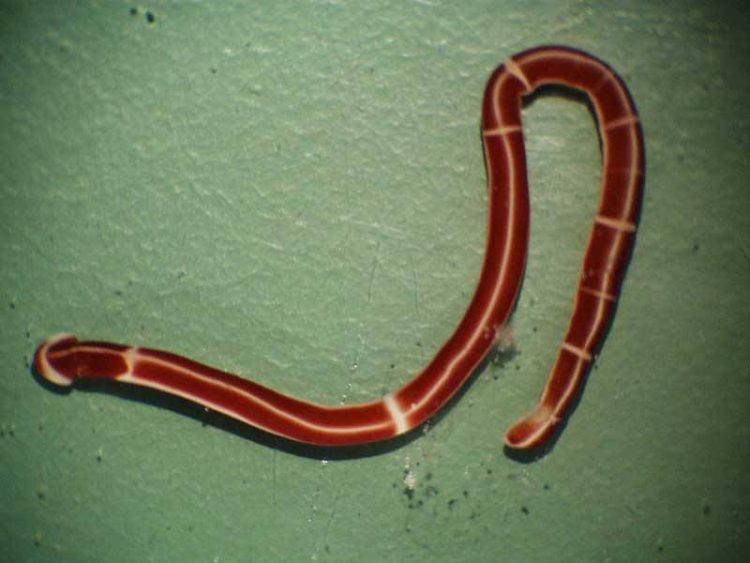The Fascinating World of Ribbon Worms

striking colors, this marine invertebrate captivates the interest of scientists and nature enthusiasts alike. Ribbon worms are primarily found in oceanic environments but can also inhabit freshwater and terrestrial ecosystems. This article delves into the anatomy, behavior, reproduction, ecological significance, and the various species of ribbon worms, painting a comprehensive picture of these remarkable organisms.
Anatomy and Physiology
Ribbon worms possess a unique body structure that sets them apart from other invertebrates. Their bodies are long, slender, and typically flattened, resembling a ribbon, which is how they earn their name.
Body Structure
- Length and Shape: Ribbon worms can vary significantly in length, ranging from just a few millimeters to several meters. Their elongated shape allows them to navigate through different substrates effectively.
- Body Regions: The body is generally divided into three distinct regions: the anterior (head), the trunk (main body), and the posterior (tail). The head region often has sensory organs, such as eyes and tentacles, which help them sense their environment.
- Musculature: Ribbon worms possess a well-developed muscular system, allowing for various movements. They have longitudinal and circular muscles that enable them to contract and expand their bodies, facilitating locomotion.
- Nervous System: Their nervous system is relatively simple but efficient. It consists of a nerve net and a pair of nerve cords running along the length of the body, coordinating movement and sensory input.
- Digestive System: Ribbon worms have a complete digestive system, including a mouth, pharynx, and anus. Their feeding mechanism is quite remarkable; they can extend their proboscis to capture prey, which will be explored in detail later.
- Coloration: Many species exhibit vibrant colors and patterns, serving various purposes, including camouflage and warning signals to potential predators.
Habitat and Distribution
Ribbon worms inhabit diverse environments, including marine, freshwater, and terrestrial ecosystems. They are commonly found in:
- Marine Environments: Most ribbon worms thrive in marine settings, where they inhabit intertidal zones, sandy bottoms, and rocky substrates. They often burrow into the sediment, which provides them protection from predators and harsh environmental conditions.
- Freshwater Ecosystems: Some species have adapted to live in freshwater environments, such as ponds, lakes, and rivers. These ribbon worms may exhibit slightly different behaviors and physiological adaptations compared to their marine counterparts.
- Terrestrial Habitats: A few species of ribbon worms can be found in damp terrestrial environments, such as forest floors and marshes. They typically require moist conditions to survive, as they can easily desiccate.
Feeding and Predation
Ribbon worms are primarily carnivorous, feeding on small invertebrates and organic matter. Their feeding mechanism is one of the most fascinating aspects of their biology.
- Proboscis: Ribbon worms possess a specialized feeding organ called a proboscis, which can be everted (turned inside out) to capture prey. The proboscis is often equipped with barbs or sticky substances that help immobilize or ensnare prey.
- Feeding Behavior: When hunting, a ribbon worm will extend its proboscis to capture unsuspecting prey, such as small crustaceans, polychaetes, or even other ribbon worms. Once the prey is captured, the proboscis retracts, bringing the prey back to the mouth, where digestion occurs.
- Digestive Process: The digestive system of ribbon worms is designed for breaking down various organic materials. Enzymes are secreted to aid in digestion, and the nutrients are absorbed through the intestinal lining.
- Role in Ecosystems: As predators, ribbon worms play a vital role in maintaining the ecological balance of their habitats. By controlling the populations of smaller organisms, they contribute to the overall health of the ecosystem.
Reproduction and Life Cycle
The reproductive strategies of ribbon worms are diverse and can vary significantly among species. They exhibit both sexual and asexual reproduction.
- Sexual Reproduction: Many ribbon worms are dioecious, meaning they have separate male and female individuals. Fertilization usually occurs externally, with eggs and sperm released into the water column. After fertilization, eggs develop into larvae, which eventually settle into the substrate and undergo metamorphosis into juvenile forms.
- Asexual Reproduction: Some species can reproduce asexually through fragmentation. If a ribbon worm is cut into pieces, each piece has the potential to regenerate into a complete individual, allowing for rapid population growth under favorable conditions.
- Life Cycle Stages: The life cycle of ribbon worms typically involves several stages, including the larval stage, juvenile stage, and adult stage. The duration of each stage can vary based on environmental factors and species.
Ecological Significance
Ribbon worms play an essential role in their ecosystems, contributing to biodiversity and maintaining ecological balance.
- Prey and Predator Dynamics: As both predators and prey, ribbon worms are integral to food webs. They serve as food for various marine animals, including fish and larger invertebrates, while also controlling populations of smaller organisms.
- Sediment Aeration: By burrowing into sediments, ribbon worms help aerate the substrate, promoting nutrient cycling and improving the overall health of the ecosystem.
- Indicator Species: Some species of ribbon worms are sensitive to environmental changes, making them valuable as bioindicators for assessing ecosystem health. Changes in their population dynamics can signal shifts in environmental conditions.
- Research Importance: The unique biology of ribbon worms has made them a subject of scientific research. Studies on their regenerative abilities, neurobiology, and ecological roles provide valuable insights into broader biological principles.
Threats and Conservation
Despite their ecological significance, ribbon worms face several threats that could impact their populations and ecosystems.
- Habitat Destruction: Coastal development, pollution, and climate change can lead to the destruction of habitats critical for ribbon worms. Sediment degradation and loss of biodiversity can negatively impact their survival.
- Pollution: Chemical pollutants, heavy metals, and plastics can contaminate marine and freshwater ecosystems, posing risks to ribbon worm populations. They may bioaccumulate harmful substances, leading to health issues and reproductive challenges.
- Climate Change: Rising sea temperatures, ocean acidification, and altered salinity levels due to climate change can affect ribbon worm populations. Species that are unable to adapt quickly may face declines.
- Conservation Efforts: Efforts to conserve ribbon worms and their habitats include habitat restoration, pollution reduction, and monitoring programs. Research into their biology and ecology can also inform conservation strategies.
Notable Species of Ribbon Worms
There are over 1,300 known species of ribbon worms, each exhibiting unique characteristics and adaptations. Here are a few notable species:
- Lineus longissimus: This species is one of the longest ribbon worms, with some individuals measuring over 30 meters in length. It is found in the North Atlantic and is known for its striking coloration.
- Cephalothrix simula: This species inhabits marine environments and is notable for its distinct proboscis structure, which aids in capturing prey effectively.
- Amphiporus bioculatus: Found in shallow waters, this species has a unique two-eyed structure, making it easily identifiable. It plays a significant role in the coastal food web.
- Nectonema spp.: These ribbon worms are primarily found in deep-sea environments. Their adaptations to extreme conditions make them a subject of interest for scientists studying deep-sea ecosystems.
Conclusion
Ribbon worms are a remarkable group of organisms that contribute significantly to the health and stability of their ecosystems. Their unique anatomy, diverse feeding behaviors, and fascinating reproductive strategies highlight the complexity of life in aquatic environments. As we continue to study and understand these intriguing creatures, it becomes increasingly clear that they hold valuable insights into ecological dynamics and biological principles. Protecting their habitats and addressing the threats they face is crucial for maintaining biodiversity and ecological balance in our oceans and waterways. As we deepen our appreciation for ribbon worms, we also gain a better understanding of the intricate web of life that sustains our planet.





